- Date & Time: Monday, July 10, 2017; 6:15 PM - 7:15 PM
Location: David Lawrence Convention Center, Pittsburgh PA
Speaker: Andrew Knyazev and other panelists, MERL Brief - Andrew Knyazev accepted an invitation to represent MERL at the panel on Student Careers in Business, Industry and Government at the annual meeting of the Society for Industrial and Applied Mathematics (SIAM).
The format consists of a five minute introduction by each of the panelists covering their background and an overview of the mathematical and computational challenges at their organization. The introductions will be followed by questions from the students.
-
- Date & Time: Tuesday, March 28, 2017; 1:30 - 5:30PM
Location: Google (355 Main St., 5th Floor, Cambridge MA)
MERL Contacts: Daniel N. Nikovski; Anthony Vetro; Jinyun Zhang Brief - How will AI and robotics reshape the economy and create new opportunities (and challenges) across industries? Who are the hottest companies that will compete with the likes of Google, Amazon, and Uber to create the future? And what are New England innovators doing to strengthen the local cluster and help lead the national discussion?
MERL will be participating in Xconomy's third annual conference on AI and robotics in Boston to address these questions. MERL President & CEO, Dick Waters, will be on a panel discussing the status and future of self-driving vehicles. Lab members will also be on hand demonstrate and discuss recent advances AI and robotics technology.
The agenda and registration for the event can be found online: https://xconomyforum85.eventbrite.com.
-
- Date & Time: Tuesday, January 17, 2017; 6:00 pm
Location: 201 Broadway, Cambridge, MA
Speaker: Tim Marks, Esra Cansizoglu and Carl Vondrick, MERL and MIT
Research Area: Computer Vision
Brief - MERL was pleased to host the Boston Imaging and Vision Meetup held on January 17. The meetup is an informal gathering of people interested in the field of computer imaging and vision. According to the group's website "the meetup provides an opportunity for the image processing/computer vision community to network, socialize and learn". The event held at MERL featured three speakers, Tim Marks and Esra Cansizoglu from MERL, as well as Carl Vondrick, an MIT CS graduate student in the group of Prof. Antonio Torralba. Roughly 70 people attended to eat pizza, hear the speakers and network.
-
- Date & Time: Wednesday, February 1, 2017; 12:00-13:00
Speaker: Dr. Heiga ZEN, Google
MERL Host: Chiori Hori
Research Area: Speech & Audio
Abstract 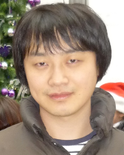 Recent progress in generative modeling has improved the naturalness of synthesized speech significantly. In this talk I will summarize these generative model-based approaches for speech synthesis such as WaveNet, a deep generative model of raw audio waveforms. We show that WaveNets are able to generate speech which mimics any human voice and which sounds more natural than the best existing Text-to-Speech systems.
Recent progress in generative modeling has improved the naturalness of synthesized speech significantly. In this talk I will summarize these generative model-based approaches for speech synthesis such as WaveNet, a deep generative model of raw audio waveforms. We show that WaveNets are able to generate speech which mimics any human voice and which sounds more natural than the best existing Text-to-Speech systems.
See https://deepmind.com/blog/wavenet-generative-model-raw-audio/ for further details.
-
- Date & Time: Tuesday, December 13, 2016; Noon
Speaker: Yue M. Lu, John A. Paulson School of Engineering and Applied Sciences, Harvard University
MERL Host: Petros T. Boufounos
Research Areas: Computational Sensing, Machine Learning
Abstract 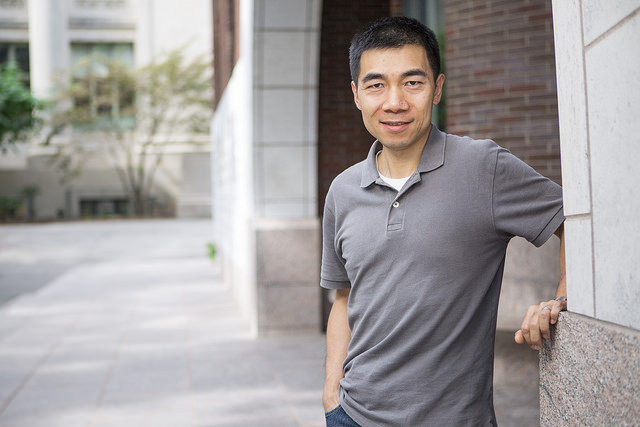 In this talk, we will present a framework for analyzing, in the high-dimensional limit, the exact dynamics of several stochastic optimization algorithms that arise in signal and information processing. For concreteness, we consider two prototypical problems: sparse principal component analysis and regularized linear regression (e.g. LASSO). For each case, we show that the time-varying estimates given by the algorithms will converge weakly to a deterministic "limiting process" in the high-dimensional limit. Moreover, this limiting process can be characterized as the unique solution of a nonlinear PDE, and it provides exact information regarding the asymptotic performance of the algorithms. For example, performance metrics such as the MSE, the cosine similarity and the misclassification rate in sparse support recovery can all be obtained by examining the deterministic limiting process. A steady-state analysis of the nonlinear PDE also reveals interesting phase transition phenomena related to the performance of the algorithms. Although our analysis is asymptotic in nature, numerical simulations show that the theoretical predictions are accurate for moderate signal dimensions.
In this talk, we will present a framework for analyzing, in the high-dimensional limit, the exact dynamics of several stochastic optimization algorithms that arise in signal and information processing. For concreteness, we consider two prototypical problems: sparse principal component analysis and regularized linear regression (e.g. LASSO). For each case, we show that the time-varying estimates given by the algorithms will converge weakly to a deterministic "limiting process" in the high-dimensional limit. Moreover, this limiting process can be characterized as the unique solution of a nonlinear PDE, and it provides exact information regarding the asymptotic performance of the algorithms. For example, performance metrics such as the MSE, the cosine similarity and the misclassification rate in sparse support recovery can all be obtained by examining the deterministic limiting process. A steady-state analysis of the nonlinear PDE also reveals interesting phase transition phenomena related to the performance of the algorithms. Although our analysis is asymptotic in nature, numerical simulations show that the theoretical predictions are accurate for moderate signal dimensions.
-
- Date & Time: Monday, December 12, 2016; 12:00 PM
Speaker: Yanlai Chen, Department of Mathematics at the University of Massachusetts Dartmouth
Research Areas: Control, Dynamical Systems
Abstract - Models of reduced computational complexity is indispensable in scenarios where a large number of numerical solutions to a parametrized problem are desired in a fast/real-time fashion. These include simulation-based design, parameter optimization, optimal control, multi-model/scale analysis, uncertainty quantification. Thanks to an offline-online procedure and the recognition that the parameter-induced solution manifolds can be well approximated by finite-dimensional spaces, reduced basis method (RBM) and reduced collocation method (RCM) can improve efficiency by several orders of magnitudes. The accuracy of the RBM solution is maintained through a rigorous a posteriori error estimator whose efficient development is critical and involves fast eigensolves.
In this talk, I will give a brief introduction of the RBM/RCM, and explain how they can be used for data compression, face recognition, and significantly delaying the curse of dimensionality for uncertainty quantification.
-
- Date & Time: Friday, December 2, 2016; 11:00 AM
Speaker: Prof. Waheed Bajwa, Rutgers University
MERL Host: Petros T. Boufounos
Research Area: Computational Sensing
Abstract 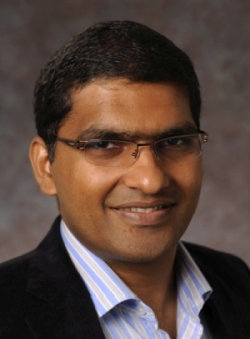 While distributed information processing has a rich history, relatively less attention has been paid to the problem of collaborative learning of nonlinear geometric structures underlying data distributed across sites that are connected to each other in an arbitrary topology. In this talk, we discuss this problem in the context of collaborative dictionary learning from big, distributed data. It is assumed that a number of geographically-distributed, interconnected sites have massive local data and they are interested in collaboratively learning a low-dimensional geometric structure underlying these data. In contrast to some of the previous works on subspace-based data representations, we focus on the geometric structure of a union of subspaces (UoS). In this regard, we propose a distributed algorithm, termed cloud K-SVD, for collaborative learning of a UoS structure underlying distributed data of interest. The goal of cloud K-SVD is to learn an overcomplete dictionary at each individual site such that every sample in the distributed data can be represented through a small number of atoms of the learned dictionary. Cloud K-SVD accomplishes this goal without requiring communication of individual data samples between different sites. In this talk, we also theoretically characterize deviations of the dictionaries learned at individual sites by cloud K-SVD from a centralized solution. Finally, we numerically illustrate the efficacy of cloud K-SVD in the context of supervised training of nonlinear classsifiers from distributed, labaled training data.
While distributed information processing has a rich history, relatively less attention has been paid to the problem of collaborative learning of nonlinear geometric structures underlying data distributed across sites that are connected to each other in an arbitrary topology. In this talk, we discuss this problem in the context of collaborative dictionary learning from big, distributed data. It is assumed that a number of geographically-distributed, interconnected sites have massive local data and they are interested in collaboratively learning a low-dimensional geometric structure underlying these data. In contrast to some of the previous works on subspace-based data representations, we focus on the geometric structure of a union of subspaces (UoS). In this regard, we propose a distributed algorithm, termed cloud K-SVD, for collaborative learning of a UoS structure underlying distributed data of interest. The goal of cloud K-SVD is to learn an overcomplete dictionary at each individual site such that every sample in the distributed data can be represented through a small number of atoms of the learned dictionary. Cloud K-SVD accomplishes this goal without requiring communication of individual data samples between different sites. In this talk, we also theoretically characterize deviations of the dictionaries learned at individual sites by cloud K-SVD from a centralized solution. Finally, we numerically illustrate the efficacy of cloud K-SVD in the context of supervised training of nonlinear classsifiers from distributed, labaled training data.
-
- Date: Saturday, December 10, 2016
Location: Centre Convencions Internacional Barcelona, Barcelona SPAIN
Research Areas: Machine Learning, Speech & Audio
Brief - MERL researcher John Hershey, is organizing a Workshop on End-to-End Speech and Audio Processing, on behalf of MERL's Speech and Audio team, and in collaboration with Philemon Brakel of the University of Montreal. The workshop focuses on recent advances to end-to-end deep learning methods to address alignment and structured prediction problems that naturally arise in speech and audio processing. The all day workshop takes place on Saturday, December 10th at NIPS 2016, in Barcelona, Spain.
-
- Date: Tuesday, December 13, 2016
Location: 2016 IEEE Spoken Language Technology Workshop, San Diego, California
Speaker: John Hershey, MERL
MERL Contact: Jonathan Le Roux
Research Areas: Machine Learning, Speech & Audio
Brief - MERL researcher John Hershey presents an invited tutorial at the 2016 IEEE Workshop on Spoken Language Technology, in San Diego, California. The topic, "developing novel deep neural network architectures from probabilistic models" stems from MERL work with collaborators Jonathan Le Roux and Shinji Watanabe, on a principled framework that seeks to improve our understanding of deep neural networks, and draws inspiration for new types of deep network from the arsenal of principles and tools developed over the years for conventional probabilistic models. The tutorial covers a range of parallel ideas in the literature that have formed a recent trend, as well as their application to speech and language.
-
- Date: Tuesday, December 13, 2016 - Friday, December 16, 2016
Location: San Diego, California
Research Area: Speech & Audio
Brief - The IEEE Workshop on Spoken Language Technology is a premier international showcase for advances in spoken language technology. The theme for 2016 is "machine learning: from signal to concepts," which reflects the current excitement about end-to-end learning in speech and language processing. This year, MERL is showing its support for SLT as one of its top sponsors, along with Amazon and Microsoft.
-
- Date & Time: Thursday, December 8, 2016; 4:00-7:00pm
Location: 201 Broadway, 8th Floor, Cambridge, MA
MERL Contacts: Elizabeth Phillips; Anthony Vetro Brief - Snacks, demos, science: On Thursday 12/8, Mitsubishi Electric Research Labs (MERL) will host an open house for graduate+ students interested in internships, post-docs, and research scientist positions. The event will be held from 4-7pm and will feature demos & short presentations in our main areas of research: algorithms, multimedia, electronics, communications, computer vision, speech processing, optimization, machine learning, data analytics, mechatronics, dynamics, control, and robotics. MERL is a high impact publication-oriented research lab with very extensive internship and university collaboration programs. Most internships lead to publication; many of our interns and staff have gone on to notable careers at MERL and in academia. Come mix with our researchers, see our state of the art technologies, and learn about our research opportunities. Dress code: casual, with resumes.
Pre-registration for the event is strongly encouraged:
https://www.eventbrite.com/e/merl-open-house-tickets-29408503626
Current internship and employment openings:
http://www.merl.com/internship/openings
http://www.merl.com/employment/employment.
-
- Date & Time: Wednesday, November 16, 2016; 3:30-6:30pm
Location: Sheraton Commander (16 Garden Street, Cambridge, MA)
MERL Contacts: Elizabeth Phillips; Anthony Vetro Brief - MERL will be participating in the Engineering Career Fair Collaborative, which is being held on November 16, 2016 at the Sheraton Commander in Cambridge from 3:30-6:30pm. Graduate students with an interest in learning about internship and other employment opportunities at MERL are invited to visit our booth. Staff members will be on hand to discuss current openings. We will also be showing some demonstrations of current research projects.
Current internship and employment openings:
http://www.merl.com/internship/openings
http://www.merl.com/employment/employment.
-
- Date: Friday, October 21, 2016
Location: MIT, McGovern Institute for Brain Research, Cambridge, MA
MERL Contact: Jonathan Le Roux
Research Area: Speech & Audio
Brief - SANE 2016, a one-day event gathering researchers and students in speech and audio from the Northeast of the American continent, will be held on Friday October 21, 2016 at MIT's Brain and Cognitive Sciences Department, at the McGovern Institute for Brain Research, in Cambridge, MA.
It is a follow-up to SANE 2012 (Mitsubishi Electric Research Labs - MERL), SANE 2013 (Columbia University), SANE 2014 (MIT CSAIL), and SANE 2015 (Google NY). Since the first edition, the audience has steadily grown, gathering 140 researchers and students in 2015.
SANE 2016 will feature invited talks by leading researchers: Juan P. Bello (NYU), William T. Freeman (MIT/Google), Nima Mesgarani (Columbia University), DAn Ellis (Google), Shinji Watanabe (MERL), Josh McDermott (MIT), and Jesse Engel (Google). It will also feature a lively poster session during lunch time, open to both students and researchers.
SANE 2016 is organized by Jonathan Le Roux (MERL), Josh McDermott (MIT), Jim Glass (MIT), and John R. Hershey (MERL).
-
- Date & Time: Friday, September 23, 2016; 12:00 PM- 1:00 PM
Speaker: Dr. Earl McCune, Eridan Communications
Research Areas: Communications, Signal Processing
Abstract 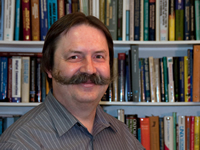 To maximize the operating energy efficiency of any wireless communication link requires a global optimization not only across the entire block diagram, but also including the selected signal modulation and aspects of the link operating protocol. Achieving this global optimization is first examined for the transmitter, receiver, and baseband circuitry. Then the important aspects of signal modulation necessary to access these circuit optimizations, with examples, are presented, followed by the correspondingly important protocol aspects needed. A metric called modulation-available energy efficiency (MAEE) compares proposed signals for compatibility with high energy efficiency objectives.
To maximize the operating energy efficiency of any wireless communication link requires a global optimization not only across the entire block diagram, but also including the selected signal modulation and aspects of the link operating protocol. Achieving this global optimization is first examined for the transmitter, receiver, and baseband circuitry. Then the important aspects of signal modulation necessary to access these circuit optimizations, with examples, are presented, followed by the correspondingly important protocol aspects needed. A metric called modulation-available energy efficiency (MAEE) compares proposed signals for compatibility with high energy efficiency objectives.
-
- Date & Time: Wednesday, August 17, 2016; 1 PM
Speaker: Gilles Zerah, Centre Francais en Calcul Atomique et Moleculaire-Ile-de-France (CFCAM-IdF)
Research Areas: Applied Physics, Electronic and Photonic Devices
Abstract - The first part of the talk is a high-level review of modern technologies for atomic-level modelling of materials. The second part discusses band gap calculations and MERL results for semi-conductors.
-
- Date & Time: Friday, July 22, 2016; 12:00 Noon
Location: Cambridge Brewery
MERL Contacts: Elizabeth Phillips; Jinyun Zhang Brief - MERL hosted its 2nd Annual "Women In Science Celebration". MERL's current team of female interns discussed and celebrated the contributions they've made during their internships at MERL.
-
- Date & Time: Wednesday, July 13, 2016; 2:30 PM - 3:30
Speaker: Richard Lehoucq, Sandia National Laboratories
Research Areas: Computer Vision, Digital Video, Machine Learning
Abstract 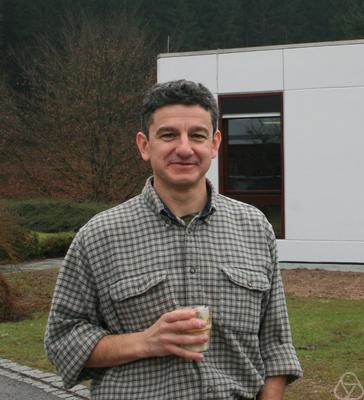 My presentation considers the research question of whether existing algorithms and software for the large-scale sparse eigenvalue problem can be applied to problems in spectral graph theory. I first provide an introduction to several problems involving spectral graph theory. I then provide a review of several different algorithms for the large-scale eigenvalue problem and briefly introduce the Anasazi package of eigensolvers.
My presentation considers the research question of whether existing algorithms and software for the large-scale sparse eigenvalue problem can be applied to problems in spectral graph theory. I first provide an introduction to several problems involving spectral graph theory. I then provide a review of several different algorithms for the large-scale eigenvalue problem and briefly introduce the Anasazi package of eigensolvers.
-
- Date & Time: Monday, July 11, 2016; 10 AM - 9:15 PM
Location: Westin Boston Waterfront Pavilion, Boston, Massachusetts
MERL Contacts: Matthew Brand; Arvind Raghunathan Brief - MERL researchers participate in SIAM Job fair to showcase MERL's research and highlight employment and intern opportunities at MERL. The Career Fair emphasizes careers in business, industry, and government, and takes place during the SIAM Annual Meeting.
The SIAM Applied Mathematics and Computational Science Career Fair is an informational and interactive event at which employers and prospective employees can discuss careers. It is a great opportunity for prospective employees to meet government and industry representatives and discuss what they are looking for and what each employer has to offer.
-
- Date & Time: Thursday, July 7, 2016; 2:00 PM
Speaker: Dr. Sonja Glavaski, Program Director, ARPA-E
MERL Host: Arvind Raghunathan
Research Area: Electric Systems
Abstract 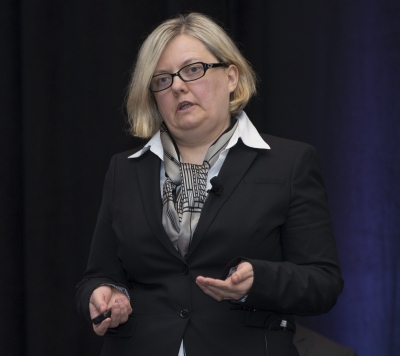 The evolution of the grid faces significant challenges if it is to integrate and accept more energy from renewable generation and other Distributed Energy Resources (DERs). To maintain grid's reliability and turn intermittent power sources into major contributors to the U.S. energy mix, we have to think about the grid differently and design it to be smarter and more flexible.
The evolution of the grid faces significant challenges if it is to integrate and accept more energy from renewable generation and other Distributed Energy Resources (DERs). To maintain grid's reliability and turn intermittent power sources into major contributors to the U.S. energy mix, we have to think about the grid differently and design it to be smarter and more flexible.
ARPA-E is interested in disruptive technologies that enable increased integration of DERs by real-time adaptation while maintaining grid reliability and reducing cost for customers with smart technologies. The potential impact is significant, with projected annual energy savings of more than 3 quadrillion BTU and annual CO2 emissions reductions of more than 250 million metric tons.
This talk will identify opportunities in developing next generation control technologies and grid operation paradigms that address these challenges and enable secure, stable, and reliable transmission and distribution of electrical power. Summary of newly announced ARPA-E NODES (Network Optimized Distributed Energy Systems) Program funding development of these technologies will be presented.
-
- Date: Thursday, June 2, 2016
Location: Norton's Woods Conference Center at American Academy of Arts & Sciences, Cambridge, MA
MERL Contacts: Elizabeth Phillips; Anthony Vetro Brief - MERL celebrated 25 years of innovation on Thursday, June 2 at the Norton's Woods Conference Center at the American Academy of Arts & Sciences in Cambridge, MA. The event was a great success, with inspiring keynote talks, insightful panel sessions, and an exciting research showcase of MERL's latest breakthroughs.
Please visit the event page to view photos of each session, video presentations, as well as a commemorative booklet that highlights past and current research.
-
- Date & Time: Friday, June 3, 2016; 1:30PM - 3:00PM
Speaker: Nobuaki Minematsu and Daisuke Saito, The University of Tokyo
Research Area: Speech & Audio
Abstract 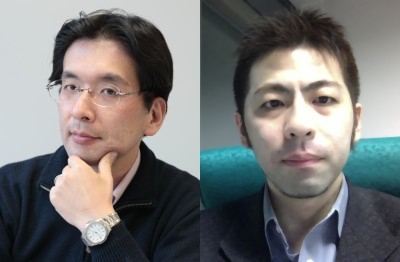 Speech signals covey various kinds of information, which are grouped into two kinds, linguistic and extra-linguistic information. Many speech applications, however, focus on only a single aspect of speech. For example, speech recognizers try to extract only word identity from speech and speaker recognizers extract only speaker identity. Here, irrelevant features are often treated as hidden or latent by applying the probability theory to a large number of samples or the irrelevant features are normalized to have quasi-standard values. In speech analysis, however, phases are usually removed, not hidden or normalized, and pitch harmonics are also removed, not hidden or normalized. The resulting speech spectrum still contains both linguistic information and extra-linguistic information. Is there any good method to remove extra-linguistic information from the spectrum? In this talk, our answer to that question is introduced, called speech structure. Extra-linguistic variation can be modeled as feature space transformation and our speech structure is based on the transform-invariance of f-divergence. This proposal was inspired by findings in classical studies of structural phonology and recent studies of developmental psychology. Speech structure has been applied to accent clustering, speech recognition, and language identification. These applications are also explained in the talk.
Speech signals covey various kinds of information, which are grouped into two kinds, linguistic and extra-linguistic information. Many speech applications, however, focus on only a single aspect of speech. For example, speech recognizers try to extract only word identity from speech and speaker recognizers extract only speaker identity. Here, irrelevant features are often treated as hidden or latent by applying the probability theory to a large number of samples or the irrelevant features are normalized to have quasi-standard values. In speech analysis, however, phases are usually removed, not hidden or normalized, and pitch harmonics are also removed, not hidden or normalized. The resulting speech spectrum still contains both linguistic information and extra-linguistic information. Is there any good method to remove extra-linguistic information from the spectrum? In this talk, our answer to that question is introduced, called speech structure. Extra-linguistic variation can be modeled as feature space transformation and our speech structure is based on the transform-invariance of f-divergence. This proposal was inspired by findings in classical studies of structural phonology and recent studies of developmental psychology. Speech structure has been applied to accent clustering, speech recognition, and language identification. These applications are also explained in the talk.
-
- Date & Time: Friday, May 13, 2016; 12:00 PM
Speaker: Oleg Iliev, Fraunhofer Institute for Industrial Mathematics, ITWM
Research Area: Dynamical Systems
Abstract 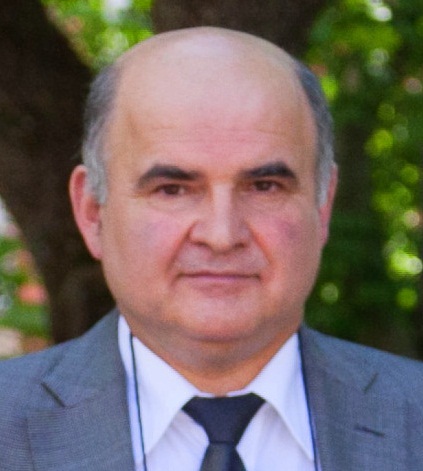 Li-ion batteries are widely used in automotive industry, in electronic devices, etc. In this talk we will discuss challenges related to the multiscale nature of batteries, mainly the understanding of processes in the porous electrodes at pore scale and at macroscale. A software tool for simulation of isothermal and non-isothermal electrochemical processes in porous electrodes will be presented. The pore scale simulations are done on 3D images of porous electrodes, or on computer generated 3D microstructures, which have the same characterization as real porous electrodes. Finite Volume and Finite Element algorithms for the highly nonlinear problems describing processes at pore level will be shortly presented. Model order reduction, MOR, empirical interpolation method, EIM-MOR algorithms for acceleration of the computations will be discussed, as well as the reduced basis method for studying parameters dependent problems. Next, homogenization of the equations describing the electrochemical processes at the pore scale will be presented, and the results will be compared to the engineering approach based on Newman's 1D+1D model. Simulations at battery cell level will also be addressed. Finally, the challenges in modeling and simulation of degradation processes in the battery will be discussed and our first simulation results in this area will be presented.
Li-ion batteries are widely used in automotive industry, in electronic devices, etc. In this talk we will discuss challenges related to the multiscale nature of batteries, mainly the understanding of processes in the porous electrodes at pore scale and at macroscale. A software tool for simulation of isothermal and non-isothermal electrochemical processes in porous electrodes will be presented. The pore scale simulations are done on 3D images of porous electrodes, or on computer generated 3D microstructures, which have the same characterization as real porous electrodes. Finite Volume and Finite Element algorithms for the highly nonlinear problems describing processes at pore level will be shortly presented. Model order reduction, MOR, empirical interpolation method, EIM-MOR algorithms for acceleration of the computations will be discussed, as well as the reduced basis method for studying parameters dependent problems. Next, homogenization of the equations describing the electrochemical processes at the pore scale will be presented, and the results will be compared to the engineering approach based on Newman's 1D+1D model. Simulations at battery cell level will also be addressed. Finally, the challenges in modeling and simulation of degradation processes in the battery will be discussed and our first simulation results in this area will be presented.
This is joint work with A.Latz (DLR), M.Taralov, V.Taralova, J.Zausch, S.Zhang from Fraunhofer ITWM, Y.Maday from LJLL, Paris 6 and Y.Efendiev from Texas A&M.
-
- Date: Thursday, May 12, 2016 - Friday, May 13, 2016
Location: Deep Learning Summit, Boston, MA
Research Area: Speech & Audio
Brief - MERL Speech and Audio Senior Team Leader John Hershey is among a set of high-profile researchers invited to speak at the Deep Learning Summit 2016 in Boston on May 12-13, 2016. John will present the team's groundbreaking work on general sound separation using a novel deep learning framework called Deep Clustering. For the first time, an artificial intelligence is able to crack the half-century-old "cocktail party problem", that is, to isolate the speech of a single person from a mixture of multiple unknown speakers, as humans do when having a conversation in a loud crowd.
-
- Date & Time: Friday, April 29, 2016; 12:00 PM - 1:00 PM
Speaker: Yu Zhang, MIT
Research Area: Speech & Audio
Abstract 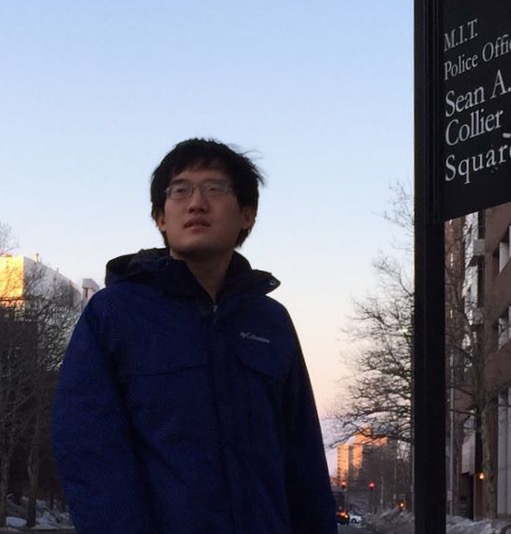 A recurrent neural network (RNN) is a class of neural network models where connections between its neurons form a directed cycle. This creates an internal state of the network which allows it to exhibit dynamic temporal behavior. Recently the RNN-based acoustic models greatly improved automatic speech recognition (ASR) accuracy on many tasks, such as an advanced version of the RNN, which exploits a structure called long-short-term memory (LSTM). However, ASR performance with distant microphones, low resources, noisy, reverberant conditions, and on multi-talker speech are still far from satisfactory as compared to humans. To address these issues, we develop new strucute of RNNs inspired by two principles: (1) the structure follows the intuition of human speech recognition; (2) the structure is easy to optimize. The talk will go beyond basic RNNs, introduce prediction-adaptation-correction RNNs (PAC-RNNs) and highway LSTMs (HLSTMs). It studies both uni-directional and bi-direcitonal RNNs and discriminative training also applied on top the RNNs. For efficient training of such RNNs, the talk will describe two algorithms for learning their parameters in some detail: (1) Latency-Controlled bi-directional model training; and (2) Two pass forward computation for sequence training. Finally, this talk will analyze the advantages and disadvantages of different variants and propose future directions.
A recurrent neural network (RNN) is a class of neural network models where connections between its neurons form a directed cycle. This creates an internal state of the network which allows it to exhibit dynamic temporal behavior. Recently the RNN-based acoustic models greatly improved automatic speech recognition (ASR) accuracy on many tasks, such as an advanced version of the RNN, which exploits a structure called long-short-term memory (LSTM). However, ASR performance with distant microphones, low resources, noisy, reverberant conditions, and on multi-talker speech are still far from satisfactory as compared to humans. To address these issues, we develop new strucute of RNNs inspired by two principles: (1) the structure follows the intuition of human speech recognition; (2) the structure is easy to optimize. The talk will go beyond basic RNNs, introduce prediction-adaptation-correction RNNs (PAC-RNNs) and highway LSTMs (HLSTMs). It studies both uni-directional and bi-direcitonal RNNs and discriminative training also applied on top the RNNs. For efficient training of such RNNs, the talk will describe two algorithms for learning their parameters in some detail: (1) Latency-Controlled bi-directional model training; and (2) Two pass forward computation for sequence training. Finally, this talk will analyze the advantages and disadvantages of different variants and propose future directions.
-
- Date: Thursday, June 2, 2016
Location: Norton's Woods Conference Center at American Academy of Arts & Sciences, Cambridge, MA
MERL Contacts: Elizabeth Phillips; Anthony Vetro Brief - A celebration event to mark MERL's 25th anniversary will be held on Thursday, June 2 at the Norton's Woods Conference Center at the American Academy of Arts & Sciences in Cambridge, MA. This event will feature keynote talks, panel sessions, and a research showcase. The event itself is invitation-only, but videos and other highlights will be made available online. Further details about the program can be obtained at the link below.
-
 Recent progress in generative modeling has improved the naturalness of synthesized speech significantly. In this talk I will summarize these generative model-based approaches for speech synthesis such as WaveNet, a deep generative model of raw audio waveforms. We show that WaveNets are able to generate speech which mimics any human voice and which sounds more natural than the best existing Text-to-Speech systems.
Recent progress in generative modeling has improved the naturalness of synthesized speech significantly. In this talk I will summarize these generative model-based approaches for speech synthesis such as WaveNet, a deep generative model of raw audio waveforms. We show that WaveNets are able to generate speech which mimics any human voice and which sounds more natural than the best existing Text-to-Speech systems. In this talk, we will present a framework for analyzing, in the high-dimensional limit, the exact dynamics of several stochastic optimization algorithms that arise in signal and information processing. For concreteness, we consider two prototypical problems: sparse principal component analysis and regularized linear regression (e.g. LASSO). For each case, we show that the time-varying estimates given by the algorithms will converge weakly to a deterministic "limiting process" in the high-dimensional limit. Moreover, this limiting process can be characterized as the unique solution of a nonlinear PDE, and it provides exact information regarding the asymptotic performance of the algorithms. For example, performance metrics such as the MSE, the cosine similarity and the misclassification rate in sparse support recovery can all be obtained by examining the deterministic limiting process. A steady-state analysis of the nonlinear PDE also reveals interesting phase transition phenomena related to the performance of the algorithms. Although our analysis is asymptotic in nature, numerical simulations show that the theoretical predictions are accurate for moderate signal dimensions.
In this talk, we will present a framework for analyzing, in the high-dimensional limit, the exact dynamics of several stochastic optimization algorithms that arise in signal and information processing. For concreteness, we consider two prototypical problems: sparse principal component analysis and regularized linear regression (e.g. LASSO). For each case, we show that the time-varying estimates given by the algorithms will converge weakly to a deterministic "limiting process" in the high-dimensional limit. Moreover, this limiting process can be characterized as the unique solution of a nonlinear PDE, and it provides exact information regarding the asymptotic performance of the algorithms. For example, performance metrics such as the MSE, the cosine similarity and the misclassification rate in sparse support recovery can all be obtained by examining the deterministic limiting process. A steady-state analysis of the nonlinear PDE also reveals interesting phase transition phenomena related to the performance of the algorithms. Although our analysis is asymptotic in nature, numerical simulations show that the theoretical predictions are accurate for moderate signal dimensions. While distributed information processing has a rich history, relatively less attention has been paid to the problem of collaborative learning of nonlinear geometric structures underlying data distributed across sites that are connected to each other in an arbitrary topology. In this talk, we discuss this problem in the context of collaborative dictionary learning from big, distributed data. It is assumed that a number of geographically-distributed, interconnected sites have massive local data and they are interested in collaboratively learning a low-dimensional geometric structure underlying these data. In contrast to some of the previous works on subspace-based data representations, we focus on the geometric structure of a union of subspaces (UoS). In this regard, we propose a distributed algorithm, termed cloud K-SVD, for collaborative learning of a UoS structure underlying distributed data of interest. The goal of cloud K-SVD is to learn an overcomplete dictionary at each individual site such that every sample in the distributed data can be represented through a small number of atoms of the learned dictionary. Cloud K-SVD accomplishes this goal without requiring communication of individual data samples between different sites. In this talk, we also theoretically characterize deviations of the dictionaries learned at individual sites by cloud K-SVD from a centralized solution. Finally, we numerically illustrate the efficacy of cloud K-SVD in the context of supervised training of nonlinear classsifiers from distributed, labaled training data.
While distributed information processing has a rich history, relatively less attention has been paid to the problem of collaborative learning of nonlinear geometric structures underlying data distributed across sites that are connected to each other in an arbitrary topology. In this talk, we discuss this problem in the context of collaborative dictionary learning from big, distributed data. It is assumed that a number of geographically-distributed, interconnected sites have massive local data and they are interested in collaboratively learning a low-dimensional geometric structure underlying these data. In contrast to some of the previous works on subspace-based data representations, we focus on the geometric structure of a union of subspaces (UoS). In this regard, we propose a distributed algorithm, termed cloud K-SVD, for collaborative learning of a UoS structure underlying distributed data of interest. The goal of cloud K-SVD is to learn an overcomplete dictionary at each individual site such that every sample in the distributed data can be represented through a small number of atoms of the learned dictionary. Cloud K-SVD accomplishes this goal without requiring communication of individual data samples between different sites. In this talk, we also theoretically characterize deviations of the dictionaries learned at individual sites by cloud K-SVD from a centralized solution. Finally, we numerically illustrate the efficacy of cloud K-SVD in the context of supervised training of nonlinear classsifiers from distributed, labaled training data. To maximize the operating energy efficiency of any wireless communication link requires a global optimization not only across the entire block diagram, but also including the selected signal modulation and aspects of the link operating protocol. Achieving this global optimization is first examined for the transmitter, receiver, and baseband circuitry. Then the important aspects of signal modulation necessary to access these circuit optimizations, with examples, are presented, followed by the correspondingly important protocol aspects needed. A metric called modulation-available energy efficiency (MAEE) compares proposed signals for compatibility with high energy efficiency objectives.
To maximize the operating energy efficiency of any wireless communication link requires a global optimization not only across the entire block diagram, but also including the selected signal modulation and aspects of the link operating protocol. Achieving this global optimization is first examined for the transmitter, receiver, and baseband circuitry. Then the important aspects of signal modulation necessary to access these circuit optimizations, with examples, are presented, followed by the correspondingly important protocol aspects needed. A metric called modulation-available energy efficiency (MAEE) compares proposed signals for compatibility with high energy efficiency objectives. My presentation considers the research question of whether existing algorithms and software for the large-scale sparse eigenvalue problem can be applied to problems in spectral graph theory. I first provide an introduction to several problems involving spectral graph theory. I then provide a review of several different algorithms for the large-scale eigenvalue problem and briefly introduce the Anasazi package of eigensolvers.
My presentation considers the research question of whether existing algorithms and software for the large-scale sparse eigenvalue problem can be applied to problems in spectral graph theory. I first provide an introduction to several problems involving spectral graph theory. I then provide a review of several different algorithms for the large-scale eigenvalue problem and briefly introduce the Anasazi package of eigensolvers. The evolution of the grid faces significant challenges if it is to integrate and accept more energy from renewable generation and other Distributed Energy Resources (DERs). To maintain grid's reliability and turn intermittent power sources into major contributors to the U.S. energy mix, we have to think about the grid differently and design it to be smarter and more flexible.
The evolution of the grid faces significant challenges if it is to integrate and accept more energy from renewable generation and other Distributed Energy Resources (DERs). To maintain grid's reliability and turn intermittent power sources into major contributors to the U.S. energy mix, we have to think about the grid differently and design it to be smarter and more flexible.  Speech signals covey various kinds of information, which are grouped into two kinds, linguistic and extra-linguistic information. Many speech applications, however, focus on only a single aspect of speech. For example, speech recognizers try to extract only word identity from speech and speaker recognizers extract only speaker identity. Here, irrelevant features are often treated as hidden or latent by applying the probability theory to a large number of samples or the irrelevant features are normalized to have quasi-standard values. In speech analysis, however, phases are usually removed, not hidden or normalized, and pitch harmonics are also removed, not hidden or normalized. The resulting speech spectrum still contains both linguistic information and extra-linguistic information. Is there any good method to remove extra-linguistic information from the spectrum? In this talk, our answer to that question is introduced, called speech structure. Extra-linguistic variation can be modeled as feature space transformation and our speech structure is based on the transform-invariance of f-divergence. This proposal was inspired by findings in classical studies of structural phonology and recent studies of developmental psychology. Speech structure has been applied to accent clustering, speech recognition, and language identification. These applications are also explained in the talk.
Speech signals covey various kinds of information, which are grouped into two kinds, linguistic and extra-linguistic information. Many speech applications, however, focus on only a single aspect of speech. For example, speech recognizers try to extract only word identity from speech and speaker recognizers extract only speaker identity. Here, irrelevant features are often treated as hidden or latent by applying the probability theory to a large number of samples or the irrelevant features are normalized to have quasi-standard values. In speech analysis, however, phases are usually removed, not hidden or normalized, and pitch harmonics are also removed, not hidden or normalized. The resulting speech spectrum still contains both linguistic information and extra-linguistic information. Is there any good method to remove extra-linguistic information from the spectrum? In this talk, our answer to that question is introduced, called speech structure. Extra-linguistic variation can be modeled as feature space transformation and our speech structure is based on the transform-invariance of f-divergence. This proposal was inspired by findings in classical studies of structural phonology and recent studies of developmental psychology. Speech structure has been applied to accent clustering, speech recognition, and language identification. These applications are also explained in the talk. Li-ion batteries are widely used in automotive industry, in electronic devices, etc. In this talk we will discuss challenges related to the multiscale nature of batteries, mainly the understanding of processes in the porous electrodes at pore scale and at macroscale. A software tool for simulation of isothermal and non-isothermal electrochemical processes in porous electrodes will be presented. The pore scale simulations are done on 3D images of porous electrodes, or on computer generated 3D microstructures, which have the same characterization as real porous electrodes. Finite Volume and Finite Element algorithms for the highly nonlinear problems describing processes at pore level will be shortly presented. Model order reduction, MOR, empirical interpolation method, EIM-MOR algorithms for acceleration of the computations will be discussed, as well as the reduced basis method for studying parameters dependent problems. Next, homogenization of the equations describing the electrochemical processes at the pore scale will be presented, and the results will be compared to the engineering approach based on Newman's 1D+1D model. Simulations at battery cell level will also be addressed. Finally, the challenges in modeling and simulation of degradation processes in the battery will be discussed and our first simulation results in this area will be presented.
Li-ion batteries are widely used in automotive industry, in electronic devices, etc. In this talk we will discuss challenges related to the multiscale nature of batteries, mainly the understanding of processes in the porous electrodes at pore scale and at macroscale. A software tool for simulation of isothermal and non-isothermal electrochemical processes in porous electrodes will be presented. The pore scale simulations are done on 3D images of porous electrodes, or on computer generated 3D microstructures, which have the same characterization as real porous electrodes. Finite Volume and Finite Element algorithms for the highly nonlinear problems describing processes at pore level will be shortly presented. Model order reduction, MOR, empirical interpolation method, EIM-MOR algorithms for acceleration of the computations will be discussed, as well as the reduced basis method for studying parameters dependent problems. Next, homogenization of the equations describing the electrochemical processes at the pore scale will be presented, and the results will be compared to the engineering approach based on Newman's 1D+1D model. Simulations at battery cell level will also be addressed. Finally, the challenges in modeling and simulation of degradation processes in the battery will be discussed and our first simulation results in this area will be presented. A recurrent neural network (RNN) is a class of neural network models where connections between its neurons form a directed cycle. This creates an internal state of the network which allows it to exhibit dynamic temporal behavior. Recently the RNN-based acoustic models greatly improved automatic speech recognition (ASR) accuracy on many tasks, such as an advanced version of the RNN, which exploits a structure called long-short-term memory (LSTM). However, ASR performance with distant microphones, low resources, noisy, reverberant conditions, and on multi-talker speech are still far from satisfactory as compared to humans. To address these issues, we develop new strucute of RNNs inspired by two principles: (1) the structure follows the intuition of human speech recognition; (2) the structure is easy to optimize. The talk will go beyond basic RNNs, introduce prediction-adaptation-correction RNNs (PAC-RNNs) and highway LSTMs (HLSTMs). It studies both uni-directional and bi-direcitonal RNNs and discriminative training also applied on top the RNNs. For efficient training of such RNNs, the talk will describe two algorithms for learning their parameters in some detail: (1) Latency-Controlled bi-directional model training; and (2) Two pass forward computation for sequence training. Finally, this talk will analyze the advantages and disadvantages of different variants and propose future directions.
A recurrent neural network (RNN) is a class of neural network models where connections between its neurons form a directed cycle. This creates an internal state of the network which allows it to exhibit dynamic temporal behavior. Recently the RNN-based acoustic models greatly improved automatic speech recognition (ASR) accuracy on many tasks, such as an advanced version of the RNN, which exploits a structure called long-short-term memory (LSTM). However, ASR performance with distant microphones, low resources, noisy, reverberant conditions, and on multi-talker speech are still far from satisfactory as compared to humans. To address these issues, we develop new strucute of RNNs inspired by two principles: (1) the structure follows the intuition of human speech recognition; (2) the structure is easy to optimize. The talk will go beyond basic RNNs, introduce prediction-adaptation-correction RNNs (PAC-RNNs) and highway LSTMs (HLSTMs). It studies both uni-directional and bi-direcitonal RNNs and discriminative training also applied on top the RNNs. For efficient training of such RNNs, the talk will describe two algorithms for learning their parameters in some detail: (1) Latency-Controlled bi-directional model training; and (2) Two pass forward computation for sequence training. Finally, this talk will analyze the advantages and disadvantages of different variants and propose future directions.